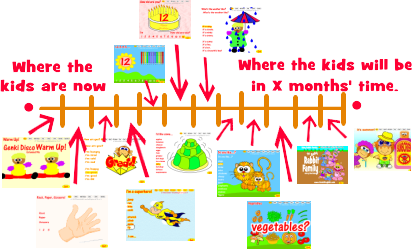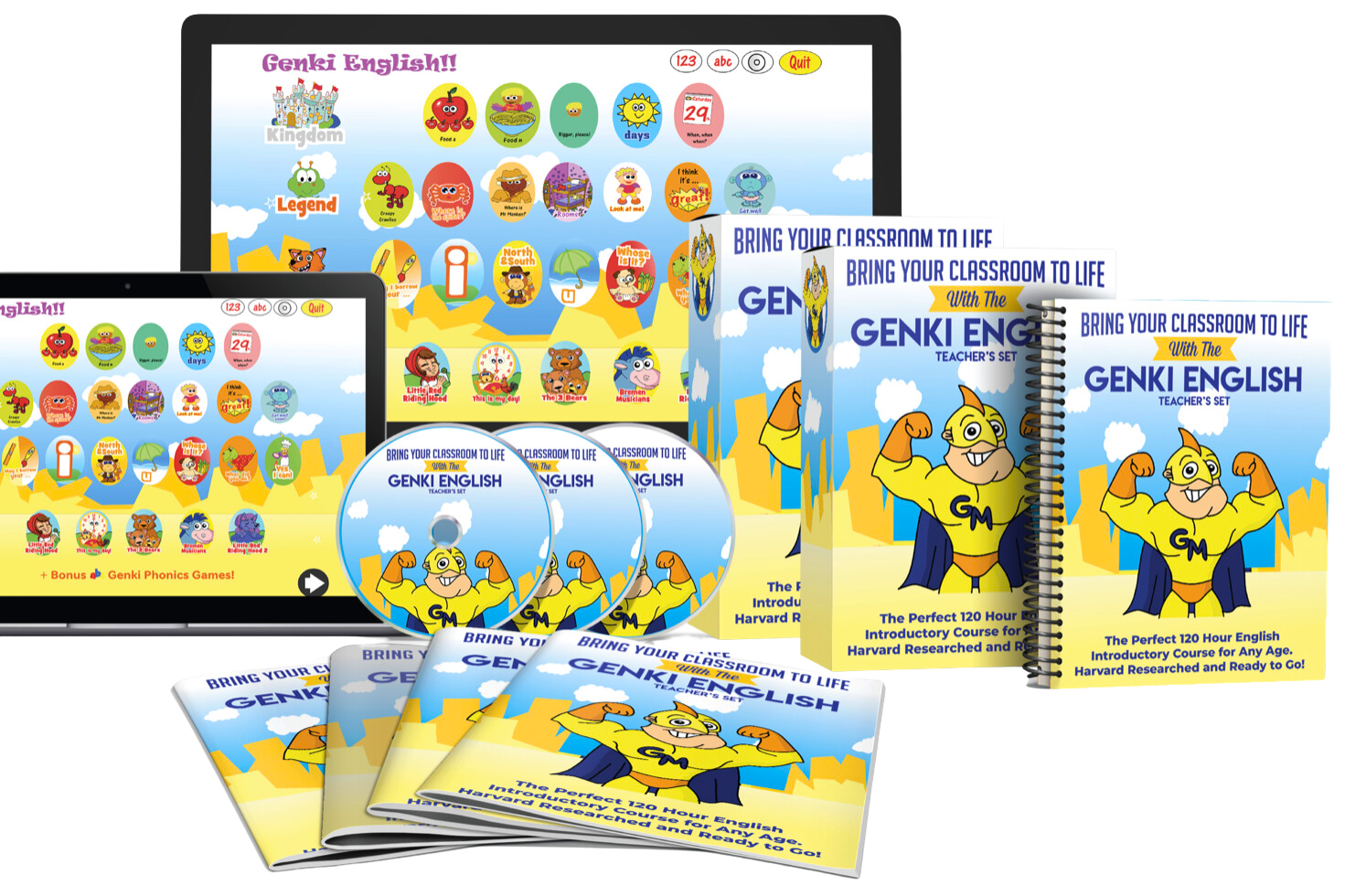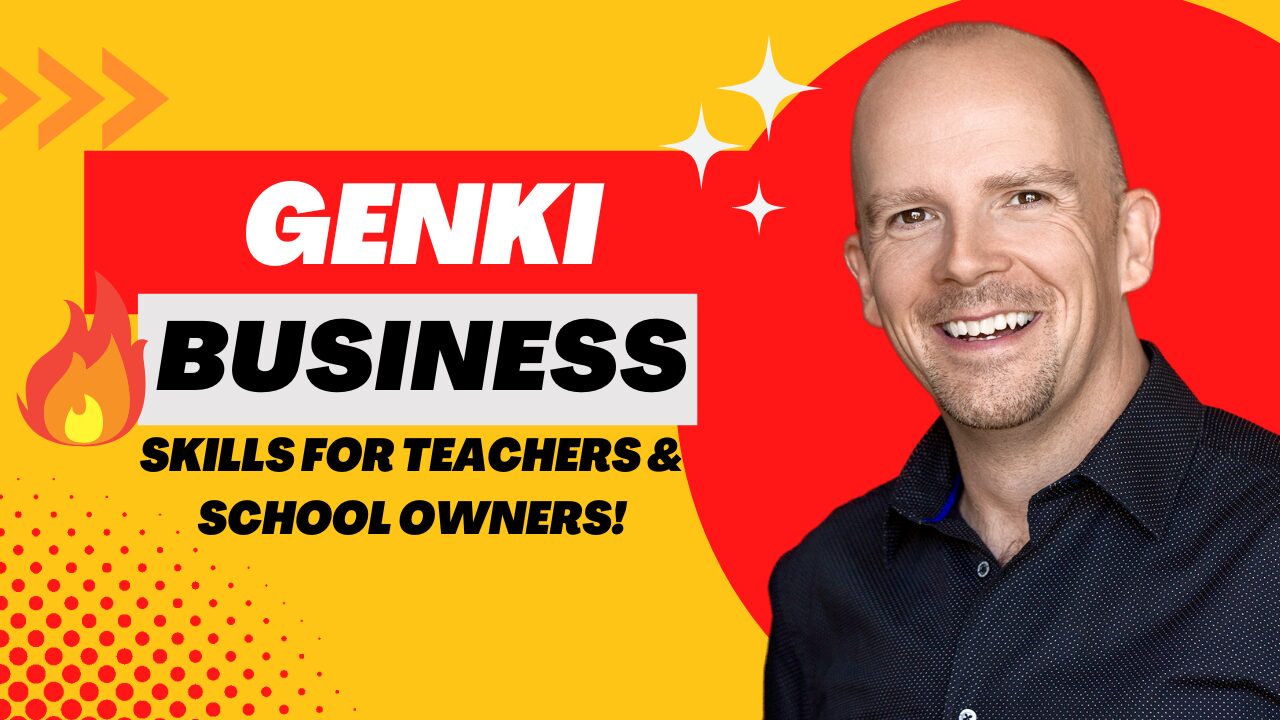I guess quite a few of you must be getting ready for next year because I’ve had a lot of emails this week asking about how to build a curriculum and goal setting.
e.g. Archana wrote in to ask:
I got a little understanding of my students’ (ranging from grade 1st to 7th) stand in English while taking few classes on some random topics, and now I am in the process of preparing a syllabus for them. So for now, I would like to know what sorts of things that I should be considering in order to make a proper syllabus for my students.
And Laurence wrote in to ask about classes for older kids:
I have developed some topics myself to stimulate discussion and conversation but I am wondering if that is good enough.
First Steps…
So the first thing is to sit down and really set your goals for the year. If I’m a parent asking about your classes, what *exactly* will my child learn in a month, 6 months and a year? No wishy-washy answers, you’ve got to know what results you’re going to give me.
Ninja Tip: Note, this is different from the sales copy you will use in advertising. The main thing you are *selling* is transformation, transforming the kids from maybe shy, non-English speakers, into confident, English speaking communication ninjas. But what we’re talking about here, is how you will do it, using what topics of English.
So you need to really think, concretely, what is your goal, what exactly will the kids be able to do.
And you need to draw it on a piece of paper:

Two dots, and of course the quickest way between two dots is a straight line.
Then you find out how many lessons you will have in this period of time and divide up the line.

Now you simply choose which lessons will get you to the goal in the most efficient way.

You’ll very quickly see how much you can realistically do in the time frame and it will really help you decide whether you need to change the goals (not usually the best choice!) or to make your curriculum more efficient.
If you are lucky enough to have lots of free time you can add in extra “fun” lessons that fill up the time, but in general you should ask yourself whether each lesson truly helps the kids move closer to the goal, or will it mean you’ll be no further on than the lesson before?
Ideally you’d do this for 1 month, 6 months, 1 year and maybe 2 years. By the time you get to 3 years you’d hopefully expect the kids to not need you any more – after all that’s how long it takes to get a college degree or a black belt in karate! 🙂
Be genki,
Richard
P.S. Do let me know in the comments if this helps and what your goals are. I have lots of other techniques like this that I use in workshops to help you see your teaching more clearly, I’d be more than happy to write up a few more if enough of you would like to see them. Or if not, we’ll just stick to games. 🙂




I love this kind of post — games are great, but if I don’t have an underlying structure to pin the games to, I don’t really have anything. Just a great collection of games.
I’m a “five-shot” if I’m lucky — over the course of a year, I see the same kids five times (maybe). The fifth and sixth graders are all over the charts as to where they are starting, but I can do something about the first, second, third, fourth graders. My co-workers and I keep files about what we did with them, so it’s easy to build on previous years. The Japanese teachers, if they teach English, tend to concentrate on vocabulary items. So, I work on grammar and communication — hello, good-bye, please, thank-you and then I build from there.
I really enjoyed reading this post. I agree with Micki…
My goal is to get my kids to really enjoy learning English and feel they’re learning something they can actually use- GE is a big help in achieving this. I think I still need guide lines in how to build my year’s curriculum.
Thanks for all your wonderful advice!
Looking forward for more great tips!!!
Hi The great Richard,
I am one of the Genkis followers . I do really enjoy to read all your post every second. All your advices help me a lot and make every difficult way to an easy one.
Best wishes and looking forward for your next tips!!
i have a great technic with bad kids that i want to share: i usually give them small tasks in the classrom as doing attendance , helping a classmate do something etc,criticizing those who are laughing at them giving them bonuses for being good , calling parents often while the kid is around to praise his smallest good attitude; i never accept people even teachers being rude to them.this has proved very successful for years!
( i did the same thing with my first born child when his little brother was born just a year after she was born! they grew up loving each other so much!)
Richard the diagram you drew is fantastic. It’s the only way to think about curriculum design.
Ah…loved everything you said here…thanks a lot…you’re such a Genki.
This. Is. Sooo. Helpful!! Thank you!!